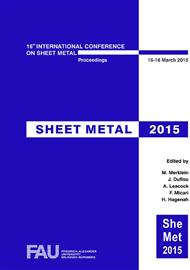p.493
p.501
p.509
p.517
p.525
p.535
p.543
p.551
p.559
Numerical Study on the Comparison of Deformation Characteristics during the Fine Blanking Process of Spur Gears and Helical Gear
Abstract:
As important transmission components, helical gears have been widely applied to mechanical and automotive fields. The traditional manufacturing process for helical gears is machining, which is time-consuming and result in the high cost of gears. In order to improve the production efficiency and product quality of helical gears, a novel forming process principle for the fine blanking of helical gears was developed. In this study, reliable three-dimensional (3D) rigid-plastic finite element (FE) models of single tooth and complete gears were set up and investigated using the software Deform-3D, the deformation characteristics of fine blanking of spur gears and helical gears were compared. Based on the valid numerical models, variation tendency of different field variables such as damage material flow velocity, and mean stress were obtained, as well as the feature of the tooth section, which provides a better understanding of the deformation mechanism of rotational fine blanking process.
Info:
Periodical:
Pages:
559-566
Citation:
Online since:
March 2015
Authors:
Keywords:
Price:
Сopyright:
© 2015 Trans Tech Publications Ltd. All Rights Reserved
Share:
Citation:


